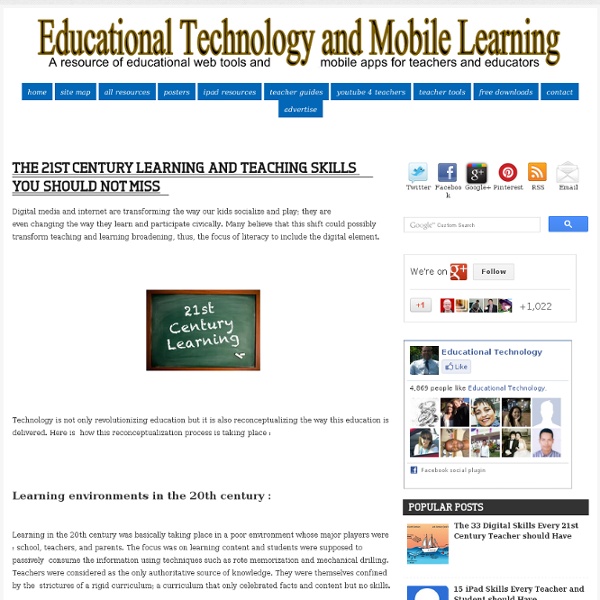The 21st Century Learning and Teaching Skills You should not Miss

A Guide to Depth of Knowledge: 5 Tips to Help Your Students
View Original Photo How do you know that the tasks your students complete will meet the rigorous standards of the Common Core? How do you know they’re reaching the level of thinking required for Common Core assessments and college and career readiness? You know by using a frame of reference called Depth of Knowledge. While Depth of Knowledge (DOK) is not a new concept, it is a new way of labeling the level of thinking required by a question or assignment in the Common Core. If you’ve noticed the exit questions included in some of our closure activities, or if you have heard of Bloom’s taxonomy, you are familiar with the fact that some activities require deeper levels of thinking. The CCSS ELA standards require students to produce at a Depth of Knowledge 3 and 4. A Breakdown of DOK1-4 DOK 1: The ability to process knowledge on a low level so that the knowledge can be reproduced or communicated. DOK 2: Solve routine problems, like book learning. A detailed look at DOK1-4. 1. 2. 3. 4. 5.
Upgrade your KWL Chart to the 21st Century | Langwitches Blog
One of the take aways from the Curriculum Mapping Institute this past week was that it brought an upgrade to THE trusted KWL (Know, What to Know and Learned) Chart to the forefront. It seems a no brainer…one of those things… “I should have thought about it”… So what is this upgrade all about? An “H” snuck into the Acronym! What does this “H” stand for”? I started out by searching Google, which immediately wanted to correct my search term and showed me the traditional “KWL chart” results. The top search results turned out mostly downloadable files for templates, which was quiet interesting as there were several explanations in these tutorials what the “H” could stand for: HOW can we find the answers to these questions? In direct relation to our quest to bring Information literacy in the 21st century to our teachers and students, the “HOW will we find the information” sticks out right away for me. My Twitter network was much better in helping me extend my search for KWHL. Related 12. 8. 29.
Related:
Related:



